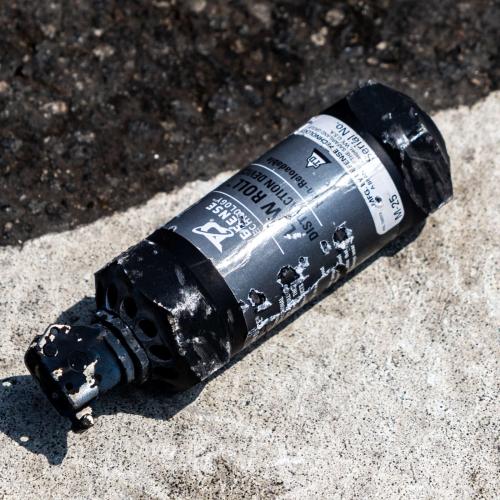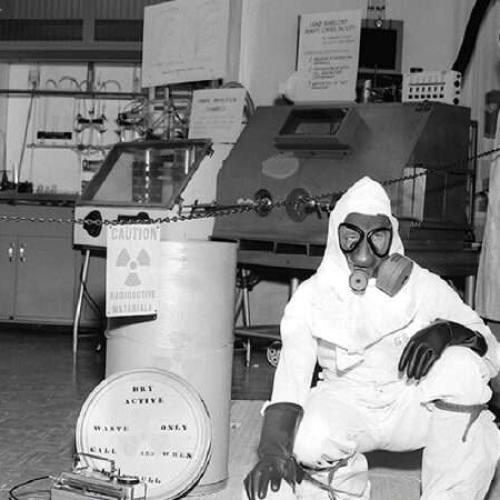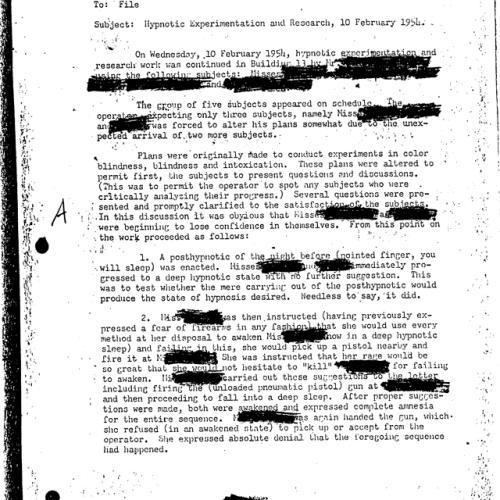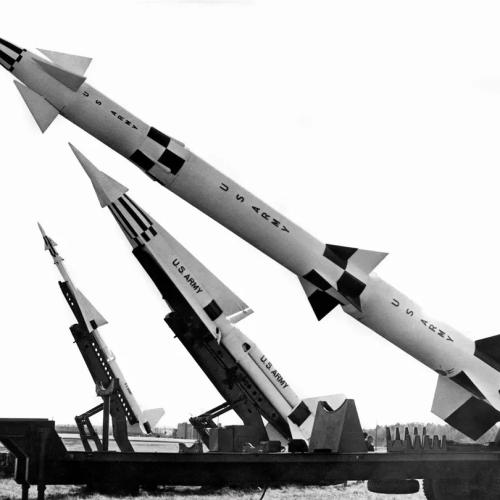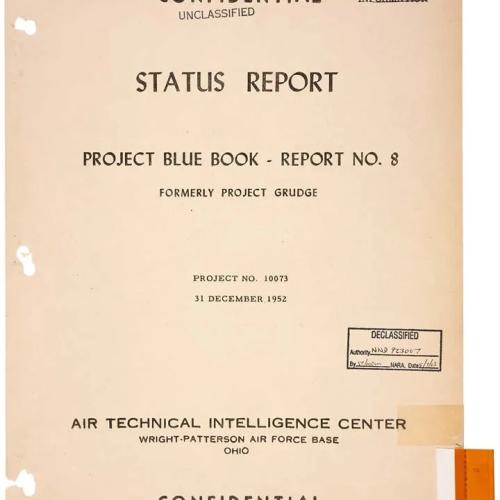Energy Inventions News Articles
Below are key excerpts of revealing news articles on energy inventions from reliable news media sources. If any link fails to function, a paywall blocks full access, or the article is no longer available, try these digital tools.
For further exploration, delve into our Energy Information Center.
A word of caution about the Model S, Tesla Motors' new electric sedan: The S stays smooth and silent, even when it's flying down the highway. Absent gears, engine noise or any vibration that doesn't originate with a pothole, it's absurdly easy for Model S drivers to shred speed limits without the slightest clue. Depending on the range of the battery pack and other options, Model S prices range all the way from $57,400 to $105,400 before state and federal incentives. The Model S functions much like a typical, automatic transmission sedan. But it's not quite the same. Put the car in drive and take your foot off the brake pedal, for example, and the S doesn't go anywhere. It just sits there until you touch the accelerator. Push the accelerator, and the car responds instantly. There's no sense of an engine laboring to pick up speed. Like other electric vehicles, the Model S uses regenerative braking. The brakes capture some of the moving car's kinetic energy, convert it to electricity and use it to recharge the battery while you drive. It's one of the ways a Model S with the most expensive battery pack option can drive more than 300 miles without plugging in. With the Model S, the regenerative braking starts the moment you ease off the accelerator pedal. The drop in speed is so pronounced that the car's brake lights will go on, even before you touch the brake pedal itself. It feels almost like having two separate braking systems working at the same time.
Note: For lots more inspiring reports from reliable major media sources on new automotive and alternative energy technologies, click here.
Wind turbines have long produced renewable energy. A French engineering firm has discovered another [application] for the towering structures. Eole Water claims to have successfully modified the traditional wind turbine design to create the WMS1000, an appliance that can manufacture drinking water from humid air. The technology works by first generating electricity in the traditional manner of a wind turbine. This power enables the entire water generating system to function. The next stage sees air sucked in through the nose of the turbine via a device known as an "air blower". All air trapped during this procedure is then directed through an electric cooling compressor situated behind the propellers. This contraption extracts humidity from the air, creating moisture which is condensed and collected. The water gathered at this stage is then transferred down a series of stainless steel pipes, which have been specially modified to aid the water production process, to a storage tank in the base of the turbine. Once there, the water is filtered and purified before it is ready for use and consumption. One turbine can produce up to 1,000 liters of water every day, depending on the level of humidity, temperature and wind speeds, ... enough to provide water for a village or town of 2,000 to 3,000 people.
Volkswagen's amazing 300mpg-plus XL1 two-seater diesel/electric hybrid is a supercar where mpg matters more than mph. Imagine a different sort of supercar; small, lightweight, with the ... most parsimonious engine. Thats VWs 21st-century streamliner, the XL1, honed not for speed but to achieve an astonishing 313mpg. VW has been messing about with these cigar-thin eco cars since the 1980 ARVW concept. In 1999, it developed a Lupo capable of three litres per 100km (94mpg), but Ferdinand Pich, VWs chairman, was more ambitious and had already ordered his R&D team to build him a one-litre (282mpg) car. In normal operation, the car stays in electric drive until full throttle is used, speeds exceed 62mph or the battery charge is down to 20 per cent. In e-mode, the car remains on battery power until 10 per cent of its charge remains (about 22 miles), whereupon the motor starts to charge it and power the vehicle. The 2.2-gallon fuel tank gives a range of about 340 miles. As might be expected, the body style is all about wind cheating. With a frontal area of 16.15sq ft and a drag coefficient of 0.186, the XL1 will be the worlds most aerodynamic production car.
Note: For many exciting reports from reliable sources on breakthroughs in automotive technology, click here.
Two Italian scientists claim to have successfully developed a cold fusion reactor that produces 12,400 watts of heat power per 400 watts of input. Not only that, but theyll be commercially available in just three months. Cold fusion is a tricky business -- some say a theoretically implausible business. Hypothetically (and broadly) speaking, the process involves fusing two smaller atomic nuclei together into a larger nucleus, a process that releases massive amounts of energy. If harnessed, cold fusion could provide cheap and nearly limitless energy with no radioactive byproduct or massive carbon emissions. Andrea Rossi and Sergio Focardi claim [their reactor] fuses atomic nuclei of nickel and hydrogen using about 1,000 watts of electricity which, after a few minutes, is reduced to an input of just 400 watts. This reaction purportedly can turn 292 grams of 68 degree water into turbine-turning steam -- a process that would normally require 12,400 watts of electricity, netting them a power gain of about 12,000 watts. They say that commercially scaled, their process could generate eight units of output per unit of input and would cost roughly one penny per kilowatt-hour, drastically cheaper than your average coal plant.
Note: For a balanced and informative article on this, see the Technology News article available here. Sadly, the only other media report on this fascinating news was a Washington Times article available here. For lots more useful information and videos on this exciting discovery, click here.
When I meet [Edward] Moses [at the Lawrence Livermore National Laboratory], the 60-year-old scientist ... shows me a tiny pellet ... and swears it will provide an endless supply of safe, clean energy. The pellet Moses holds is a model, but the real version will contain a few milligrams of deuterium and tritium, isotopes of hydrogen that can be extracted from water. If you blast the pellet with a powerful laser, you can create a reaction like the one that takes place at the center of the sun. Harness that reaction, and you've created a star on earth, and with the heat from that star you can generate electricity without creating any pollution. Forget about nuke plants, coal, oil, or wind and solar. "This is the real solar power," says Moses. What Moses is talking about is controlled nuclear fusion. Instead of splitting the nucleus of an atom, you're trying to force a deuterium nucleus to merge, or fuse, with a tritium nucleus. When that happens, you produce helium and throw off energy. Scientists have been trying to produce energy with fusion for decades. So far, they keep failing. The joke is that fusion energy is only 40 years away, and will always be only 40 years away. Moses believes, however, that his lab, which is called the National Ignition Facility, or NIF, has cracked the problem. The big challenge fusion has faced is lack of power. NIF's laser ... can produce 60 times more energy than any other laser ever built. Right now it's still being tested. But next year Moses and his scientists will fire it up with a full load of deuterium-tritium fuel, and Moses feels confident it will achieve "ignition," meaning a controlled burn in which you get out more energy than you put in.
Note: For many reports from reliable sources of promising new energy developments, click here and here.
A U.S. Navy researcher announced today that her lab has produced significant new results that indicate cold fusion-like reactions. If the work by analytical chemist Pamela Mosier-Boss and her colleagues is confirmed, it could open the door to a cheap, near-limitless reservoir of energy. Devising a fusion-based source of energy on Earth has long been a clean-energy holy grail of physicists. A small group of scientists has [tried] to produce fusion reactions at low temperatures. If such experiments did produce fusion reactions, they would generate highly energetic neutrons as a byproduct. These are what Mosier-Boss says her San Diego-based group has found. If you have fusion going on, then you have to have neutrons, she said. But we do not know if fusion is actually occurring. It could be some other nuclear reaction. Todays announcement is based partly on research published by Mosier-Boss group last year in the journal Naturwissenschaften. The announcement may turn heads, given its stage at the American Chemical Societys big meeting and the fact that the organization promoted it to science journalists in advance. Its big, said Steven Krivit, founder of the New Energy Times publication, which has tracked cold fusion developments for two decades. What were talking about may be more than anybody actually expected, he said. Were talking about a new field of science thats a hybrid between chemistry and physics.
Note: For a powerful documentary showing a major cover-up around cold fusion, click here. Many highly esteemed scientists have repeatedly demonstrated the reality of cold fusion, only to have their research sometimes ruthlessly shut down. For many hopeful reports from reliable sources on the array of new energy developments currently underway, click here.
In the world of higher education, summer is usually the off-season. But for some students, this summer was the culmination of years of hard work in a 2,400-mile solar car race from Plano, Texas to Calgary, Alberta. Fifteen teams of students drove photovoltaic-powered cars across the North American Solar Challenge finish line in Calgary Tuesday, led by the University of Michigan Solar Car Team and its vehicle, Continuum. Michigan's victory, which took about 51 hours and 42 minutes on the road, is its fifth NASC championship. The school also won the last NASC, in 2005. Jeff Ferman, the race manager for Michigan, talked about how rewarding it was to enter Calgary and be greeted by 40,000 people."The streets were lined with people," he said. "There were people on overpasses with tripods taking pictures." The Michigan team led almost the entire race from Texas, trailing only on the first day of driving when it had to stop to fix a minor electrical problem. But that 20-minute stop was the only time it had to pull over to make repairs, which team members said was one reason they did so well.
Note: If you do the math, this amazing solar powered car built by college students averaged 46.5 mph over a 2,400 mile course! Why didn't this make news headlines? Try doing a Google search on "Solar Challenge" (the annual solar car race). You will find that almost no major media cover this amazing event at all. The few who have (including this CNN article) usually fail to mention anything about the speeds attained by these cars. Why is the media not giving better coverage to these incredible breakthroughs? For a possible answer, click here.
Ten years ago I could never have imagined Id be doing this, says Greg Pal, 33, a former software executive. I mean, this is essentially agriculture, right? But ... this is the one hot area everyone wants to get into. He means bugs. To be more precise: the genetic alteration of bugs very, very small ones so that when they feed on agricultural waste such as woodchips or wheat straw, they do something extraordinary. They excrete crude oil. Unbelievably, this is not science fiction. Mr Pal holds up a small beaker of bug excretion that could, theoretically, be poured into the tank of the giant Lexus SUV next to us. Not that Mr Pal is willing to risk it just yet. He gives it a month before the first vehicle is filled up on what he calls renewable petroleum. After that, he grins, its a brave new world. Mr Pal is a senior director of LS9, one of several companies in or near Silicon Valley that have ... embarked ... on an extraordinary race to make $140-a-barrel oil (70) from Saudi Arabia obsolete. All of us here everyone in this company and in this industry, are aware of the urgency, Mr Pal says. What is most remarkable about what they are doing is that instead of trying to reengineer the global economy as is required, for example, for the use of hydrogen fuel they are trying to make a product that is interchangeable with oil. The company claims that this Oil 2.0 will not only be renewable but also carbon negative meaning that the carbon it emits will be less than that sucked from the atmosphere by the raw materials from which it is made.
Note: For a treasure trove of exciting reports on new energy inventions, click here.
Tired of petrol prices rising daily at the pump? A Japanese company has invented an electric-powered, and environmentally friendly, car that it says runs solely on water. Genepax unveiled the car in the western city of Osaka, saying that a liter (2.1 pints) of any kind of water -- rain, river or sea -- was all you needed to get the engine going for about an hour at a speed of 80 km (50 miles). "The car will continue to run as long as you have a bottle of water to top up from time to time," Genepax CEO Kiyoshi Hirasawa told local broadcaster TV Tokyo. "It does not require you to build up an infrastructure to recharge your batteries, which is usually the case for most electric cars," he added. Once the water is poured into the tank at the back of the car, the a generator breaks it down and uses it to create electrical power, TV Tokyo said. Whether the car makes it into showrooms remains to be seen. Genepax said it had just applied for a patent and is hoping to collaborate with Japanese auto manufacturers in the future. Most big automakers, meanwhile, are working on fuel-cell cars that run on hydrogen and emit -- not consume -- water.
Note: To watch a Reuters video clip on this amazing car, click here.
Texas may be best known for "Big Oil." But the oil that could some day make a dent in the country's use of fossil fuels is small. Microscopic, in fact: algae. Literally and figuratively, this is green fuel. "Algae is the ultimate in renewable energy," Glen Kertz, president and CEO of Valcent Products, told CNN while conducting a tour of his algae greenhouse on the outskirts of El Paso. "We are a giant solar collecting system. We get the bulk of our energy from the sunshine," said Kertz. Algae are among the fastest growing plants in the world, and about 50 percent of their weight is oil. That lipid oil can be used to make biodiesel for cars, trucks, and airplanes. Most people know algae as "pond scum." And until recently, most energy research and development projects used ponds to grow it. But instead of ponds, Valcent uses a closed, vertical system, growing the algae in long rows of moving plastic bags. The patented system is called Vertigro, a joint venture with Canadian alternative energy company Global Green Solutions. The companies have invested about $5 million in the Texas facility. "A pond has a limited amount of surface area for solar absorption," said Kertz. "By going vertical, you can get a lot more surface area to expose cells to the sunlight. It keeps the algae hanging in the sunlight just long enough to pick up the solar energy they need to produce, to go through photosynthesis," he said. Kertz said he can produce about 100,000 gallons of algae oil a year per acre, compared to about 30 gallons per acre from corn; 50 gallons from soybeans. Valcent research scientist Aga Pinowska said there are about 65,000 known algae species, with perhaps hundreds of thousands more still to be identified. A big part of the research at the west Texas facility involves determining what type of algae produces what type of fuel.
Note: For many exciting reports of new energy inventions, click here.
A Florida man may have accidentally invented a machine that could solve the gasoline and energy crisis plaguing the U.S.. [John] Kanzius, 63, invented a machine that emits radio waves in an attempt to kill cancerous cells while leaving normal cells intact. While testing his machine, he noticed that his invention had other unexpected abilities. Filling a test tube with salt water from a canal in his back yard, Kanzius placed the tube and a paper towel in the machine and turned it on. Suddenly, the paper towel ignited. Kanzius performed the experiment without the paper towel and got the same result -- the saltwater was actually burning. [He] said he showed the experiment to a handful of scientists across the country who claim they are baffled at watching salt water ignite. Kanzius said the flame created from his machine reaches a temperature of around 3,000 [F]. He said a chemist told him that the immense heat created from the machine breaks down the hydrogen-oxygen bond in the water, igniting the hydrogen. "You could take plain salt water out of the sea, put it in containers and produce a violent flame that could heat generators that make electricity, or provide other forms of energy," Kanzius said. He said engineers are currently experimenting with him in Erie, Pa. in an attempt to harness the energy. They've built an engine that, when placed on top of the flame, chugged along for two minutes. Kanzius admits all the excitement surrounding a new possible energy source was a stroke of luck. Someone who witnessed his work on the cancer front asked him if perhaps the machine could be used for desalinization. "This was an experiment to see if I could heat salt water, and instead of heat, I got fire," Kanzius said.
Note: Why aren't millions of dollars being channeled to explore this exciting field further? To watch a video clip of this exciting machine igniting sea water, click here.
We couldn't pass up mention of the winner of last week's Eco-marathon Americas, a fuel-economy challenge sponsored by Shell Oil Co. A team from Cal Poly San Luis Obispo won the $10,000 grand prize by achieving the equivalent of 1,902.7 miles per gallon on regular gasoline in a student-built vehicle. Granted, the students didn't win in someone's mom's Dodge minivan. Their "car" is a one-occupant streamliner built of carbon fiber composite. At a measly 98 pounds, it weighed less than the driver. And that was 98 pounds including the car's 50-cubic-centimeter Honda engine. "The main reason we do this is because it's a way to encourage students to focus on technical innovation for potential future careers," said David Sexton, president of Shell Oil Products. But there is a practical side to the competition, said Cal Poly team manager Tom Heckel, a junior mechanical engineering major. "Any publicity we can get makes people aware that the 20 mpg or so they're averaging in their cars can be improved on a lot." The event, held April 14 at the California Speedway in Fontana, was the first time that Shell had brought its 25-year-old Eco-marathon competition to the U.S. The event drew 20 university, college and high school teams from around the U.S. and Canada. Rules called for each vehicle to complete seven 1.45-mile laps around the speedway's inner track, averaging at least 15 mph. Fuel consumption was measured after each attempt and adjusted for ambient temperature and other factors in a complex formula that ends up giving an extrapolation of miles per gallon.
Note: Why would the president of Shell Oil Products state the main reason for this competition is about careers and not finding ways to improve gas mileage? The world record is over 10,000 mpg. How is it that the average car gets only 22 mpg when the Ford Model T got 25 mpg almost 100 years ago? For more, click here.
The planet's most pressing environmental problems ... may seem just too big to be solved with today's technology. But don't despair: A lot of bright minds are working on futuristic projects that promise to make the world greener. It's save-the-world stuff like toxic-waste-eating trees, smart electricity grids, oceangoing robots, and floating environmental sensors. This technology may seem far out - but it will probably be here a lot sooner than you think. 1. Try a solar-powered hydrogen fueling station in your garage. It's about the size of a filing cabinet and runs on electricity generated by standard-issue rooftop solar panels. The first version of the home fueling station is expected to produce enough hydrogen to give your runabout a range of some 100 miles without emitting a molecule of planet-warming greenhouse gas. 2. Environmental sensor networks [provide] real-time data on a variety of phenomena that affect the economy and society - climate change, hurricanes, air and water pollution. 3. Toxin-eating trees ... a technology that uses vegetation to absorb hazardous waste from industrial plants and other polluters. 4. Nuclear waste neutralizer ... a chemical technology called Urex+ that extracts reusable uranium and separates out cesium, allowing four times as much waste to be packed into nuclear burial grounds. 5. Autonomous ocean robots. 6. Sonic water purifier ... a sci-fi solution for an age-old problem that leaves 1.1 billion people without access to clean water: 7. Endangered-species tracker. 8. The interactive, renewable smart power grid ... the electricity grid of the future ... will look more like the Internet - distributed, interactive, open-source - than the dumb, one-way network of today.
Note: For many other exciting discoveries of new energy sources, click here.
Though the 100 mpg car sounds like a myth, it turns out that such vehicles do exist -- only they're built in your neighbor's garage, not a giant production plant. Known as plug-in hybrid-electric vehicles ... theyre basically Priuses or similar hybrids that have been equipped with extra batteries, so that they rarely use their gasoline engines at all. "People are salivating for plug-ins," says Bradley Berman, editor of the site HybridCars.com. A hybrid vehicle today like a Prius has both a gasoline engine and a battery, which is fed by the braking energy produced by the car. It cant be plugged in. A plug-in hybrid keeps those components, but essentially gets an extra fuel tank, in the form of an added battery bank ... that allows the car to run exclusively off battery power for most driving. Felix Kramer, founder of the California Cars Initiative, a nonprofit group that promotes the use of high-efficiency, low-emission cars, owns the first consumer plug-in in North America. Not surprisingly, he loves it. "Many days I use no gasoline, because I go at neighborhood speeds for under 30 miles, and Im just all-electric all day," he says. And the mileage? "At highway speeds, you can easily get over 100 mpg." Other plug-in owners offer up similar results. "I used to fill up every 400 miles or so," he says ... "and now I fill up every 800 miles or so." Advocates estimate that it costs less than $1 per gallon to replenish a plug-in hybrid. "Our goal is to have a $3,000 kit," CalCars' Kramer says. (That number, coincidentally, is also what many plug-in evangelists think that the technology would cost for Toyota to add to its hybrids.)
Note: If people are doing this in their garage, why aren't the auto makers already producing them? In fact, a similar vehicle was produced to be marketed in 2002, but then pulled off the market. To find why average car mileage has remained virtually unchanged for 100 years, click here.
Iceland wants to make a full conversion and plans to modify its cars, buses and trucks to run on renewable energy -- with no dependence on oil. Iceland has already started by turning water into fuel -- hydrogen fuel. Here's how it works: Electrodes split the water into hydrogen and oxygen molecules. Hydrogen electrons pass through a conductor that creates the current to power an electric engine. Hydrogen fuel now costs two to three times as much as gasoline, but gets up to three times the mileage of gas, making the overall cost about the same. As an added benefit, there are no carbon emissions -- only water vapor. By the middle of this century, all Icelanders will be required to run their cars only on hydrogen fuel, meaning no more gasoline. Icelanders say they're committed to showing the world that by making fuel from water, it is possible to kick the oil habit.
Note: This is mind-blowing information! Why isn't this amazing news of economical, non-polluting energy sources making top headlines? A video clip of the above ABC News story is available on the ABC website at the link above. A friend of mine invented a similar device only to have it ruthlessly suppressed. For lots more on all this, click here.
One of the more controversial topics involving Nikola Tesla is what became of many of his technical and scientific papers after he died in 1943. Just before his death at the height of World War II, he claimed that he had perfected his so-called "death beam." So it was natural that the FBI and other U.S. Government agencies would be interested in any scientific ideas involving weaponry. The morning after the inventor's death, his nephew Sava Kosanovic hurried to his uncle's room at the Hotel New Yorker. By the time he arrived, Tesla's body had already been removed, and Kosanovic suspected that someone had already gone through his uncle's effects. Technical papers were missing as well as a black notebook he knew Tesla kept a notebook with several hundred pages, some of which were marked "Government." Just after World War II, there was a renewed interest in beam weapons. Copies of Tesla's papers on particle beam weaponry were sent to Patterson Air Force Base in Dayton, Ohio. An operation code-named "Project Nick" was heavily funded and placed under the command of Brigadier General L. C. Craigie to test the feasibility of Tesla's concept. Details of the experiments were never published, and the project was apparently discontinued. But something peculiar happened. The copies of Tesla's papers disappeared and nobody knows what happened to them.
Note: For more on this amazing man, click here and here.
Rudolf W. Gunnerman has a tiger by the tail--the Exxon tiger. If the technology that the 66-year-old inventor has spent $6 million and the past seven years developing lives up to his claims, cars and trucks could one day be running on a fraction of the gasoline and diesel fuel they now use. Ditto for buses, planes, trains, and anything else powered by an internal-combustion engine--from lawn mowers to huge electrical generators. Gunnerman claims to have a technology that enables engines to burn a mixture of half fuel, half water. Yes, water. What's more, he says, the mixture gets 40% better mileage from the gasoline it contains and emits significantly less pollution because engines run cooler. In particular, tailpipes emit virtually no nitrogen oxides--the principal source of smog. Caterpillar Inc. is so intrigued that in early July it formed a joint venture with A-55 LP, Gunnerman's tiny, nine-person company in Reno, Nev. A-55 is short for aqueous 55%, the amount of water by weight in the patented fuels. But the key ingredient is 0.5% of a secret emulsifier that enables fuel and water to mix--and stay mixed. Gunnerman financed his work with royalties from other patents, especially those covering the making of pellets for woodstoves.
Note: If the above link fails, click here. Why didn't this exciting development make headline news? For lots more showing very promising results on this most intriguing invention, click here. For exciting reports from reliable sources on highly promising new energy developments and technologies, click here and here.
A miraculous device that can generate electricity seemingly out of thin air has been developed by engineers. Called a thermal resonator, it relies on fluctuations in temperature between day and night to produce electricity. It can be used without the need for sunlight, batteries or wind, making it ideal for situations where these resources can't be relied upon. The technology has the potential to power sensors and communications devices for years without the need for batteries. Experts at the Massachusetts Institute of Technology's (MIT) department of chemical engineering are behind the find. Their gadget is a twist on a thermoelectric generator, which creates power when one side of the device is a different temperature from the other. Researchers say that the power levels generated by the new system so far are modest. However, it outperformed a commercially available pyroelectric material - an existing method for converting temperature fluctuations to electricity - by 300 per cent. Professor Michael Strano, who led the study, said: 'We basically invented this concept out of whole cloth. 'It's something that can sit on a desk and generate energy out of what seems like nothing. 'We are surrounded by temperature fluctuations of all different frequencies all of the time. These are an untapped source of energy.' Such systems could provide low-power but long-lasting energy sources for landers or rovers exploring remote locations, including other moons and planets, says Volodymyr Koman, an MIT postdoc and co-author of the new study.
Note: For more, see this article on the MIT website.
Is Steorns Orbo technology a non-polluting, supercheap source of power? Steorn emerged at the turn of the century and to date it claims to have attracted 23 million in private investment. Put at its simplest, the Orbo technology is a non-polluting, almost cost-free source of power. It is not a battery but offers the same function. At the Steorn premises a table displays rows of heavy crimson skull-shaped boxes, known as power cubes. Each, according to the claims, holds numerous small batteries which recharge themselves allowing for a permanent supply of energy. Cube units retail at 1,200 and the first orders are due to arrive with buyers this month. However, the cube is not seen by the company as a mass-market product. They are simply a showcase for the technology. The real focus is on the mobile phone that never needs to be recharged. Explaining his own technology, [company founder Sean] McCarthy dismisses previous suggestions they are claiming to have developed a perpetual motion machine (a hypothetical device that works indefinitely without an apparent energy source) as there [are] no moving parts. Technically it isnt a battery at all; youd call it a battery substitute technology. Its something that replaces the function of the battery. It is really a generator rather than a storage device, he says.
Note: Steorn placed a full-page ad in The Economist in 2006 calling for scientists to test its new technology. For more along these lines, see concise summaries of deeply revealing new energy technology news articles from reliable major media sources.
Imagine making the 19-hour, 1,800-kilometre drive from Toronto to Halifax in an electric car without having to stop for a recharge. That's theoretically possible with a special kind of battery being demonstrated this week in Montreal. The battery ... consists of panels made mostly of aluminum. The battery can extend the range of an electric car by 1,600 kilometres when used in conjunction with the vehicle's regular lithium-ion battery. "We hope that this will increase the penetration of electric cars with zero emissions," said Aviv Tzidon, CEO of Phinergy, ... adding that it should put an end to "range anxiety." That kind of anxiety about how far an electric car can go before needing a recharge has often been cited as a reason the market for electric cars is still relatively small. The regular battery range of electric cars now on the market is a few hundred kilometres at most 135 kilometres for the Nissan Leaf and 480 kilometres for the more expensive version of the Tesla Model S. That makes those cars unsuitable for extended road trips, unless high-voltage fast-charging stations, which are still relatively uncommon, are available along the way.
Note: See a five-minute video presentation of this exciting development. Explore a treasure trove of concise summaries of incredibly inspiring news articles which will inspire you to make a difference.
Important Note: Explore our full index to revealing excerpts of key major media news articles on several dozen engaging topics. And don't miss amazing excerpts from 20 of the most revealing news articles ever published.
























